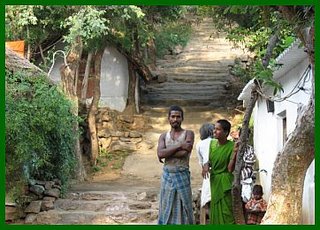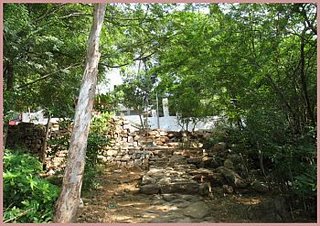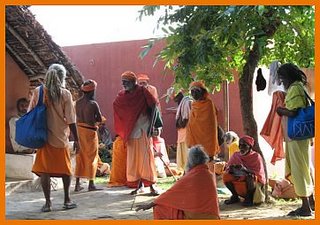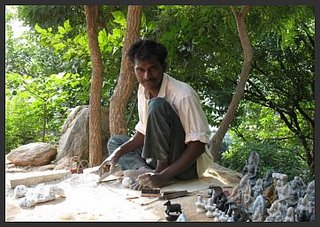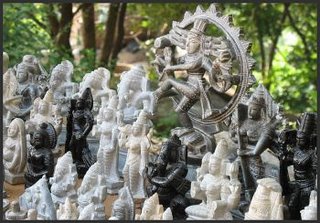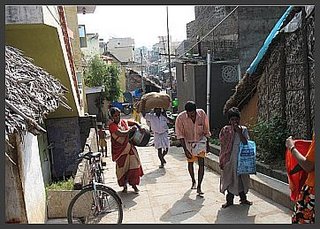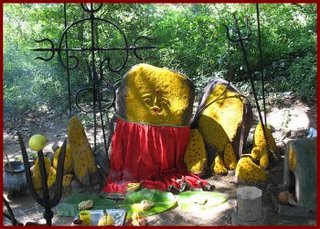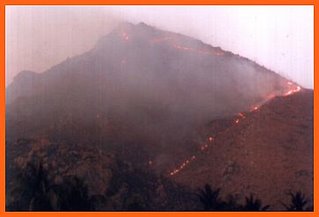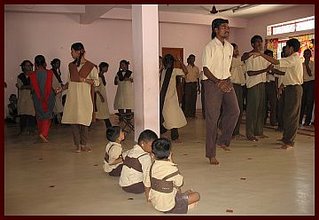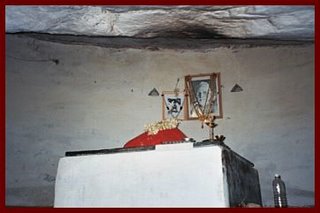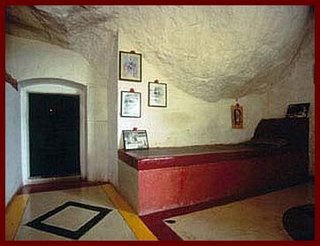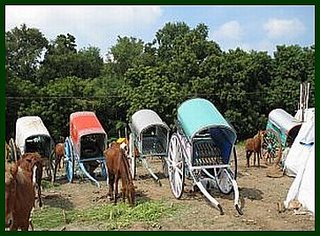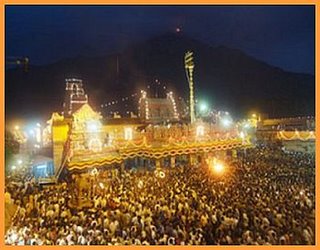A few hundred feet away from Virupaksha Cave is a compound which contains a cave that was, several centuries ago, occupied for many years by a yogi called Guhai Namasivaya. The cave and the few buildings that surround it now bear his name and are set in a beautiful, tranquil compound on the Hill slope.

Guhai Namasivaya is known to have been born around the year AD 1548 in Karnataka to a pious Saiva couple. His spiritual nature became evident at an early age: he was virtuous in his conduct, adept at his studies and evinced no attachment to worldly matters.
He practised his system of yoga for many years and as a result of the dream guidance of Lord Mallikarjuna, the presiding deity of Sri Sailam, Guhai Namasivaya came to Arunachala and remained as a Guru, giving teachings to mature disciples who approached him.
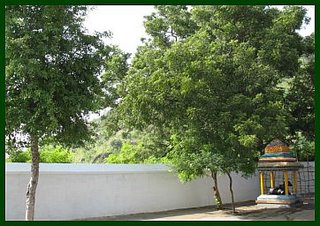
There is a famous story concerning Guhai Namasivaya that seems to show that although he had great devotion to Arunachala, he was still capable of displaying bursts of extreme anger. One day, according to this story, he took pity on a poor man whose only goat had been killed by a snake just before it was about to give birth. Guhai Namasivaya asked the man to leave the goat's body with him and to collect it the next day. When the man returned to pick up the corpse, he found that not only had the goat been restored to life, it had also given birth to two kids.
As news of this miracle spread around the town, some boys from the local weaving community decided to play a joke on him. One boy, pretending to be dead, was carried into the presence of Guhai Namasivaya by his friends. The boys claimed that their friend had died of a snake bite and asked the saint to restore him to life. Guhai Namasivaya, who could see that they were merely making fun of him, cursed them with such vehemence that the boy who was pretending to be dead actually did die.
Then Guhai Namasivaya cursed the whole weaving community, saying that they would never prosper or flourish in Tiruvannamalai again. The curse took effect: all the weavers were forced to leave town or take up other occupations because none of them could make a living by weaving in Tiruvannamalai. In the years that followed, all attempts to re-establish weaving businesses in the town failed.
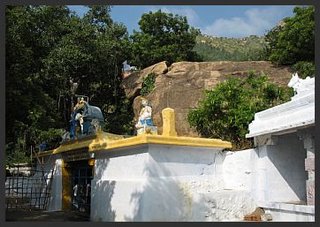
For a fuller biography of this famous saint please check link:
http://www.arunachalasamudra.org/guhainamasivaya.html
